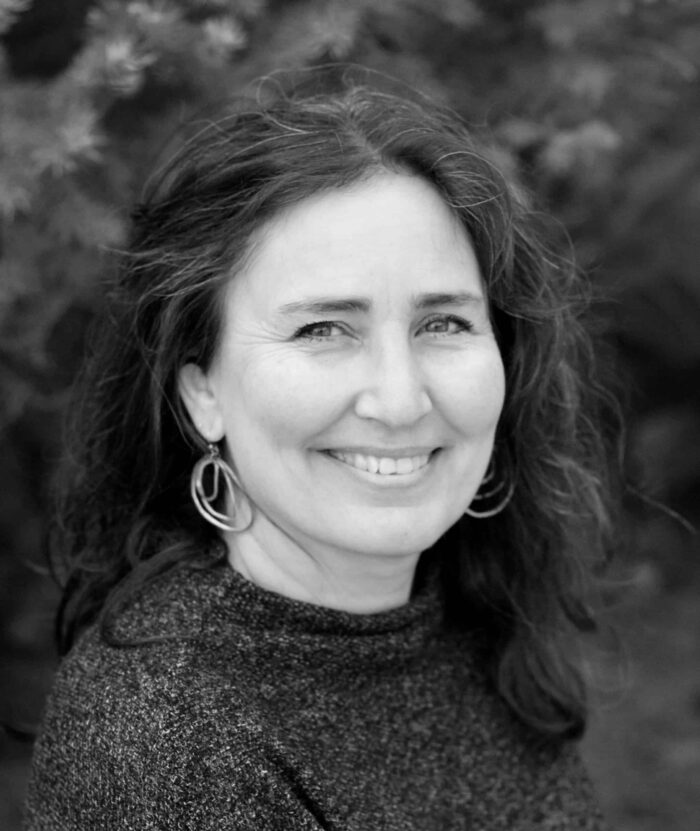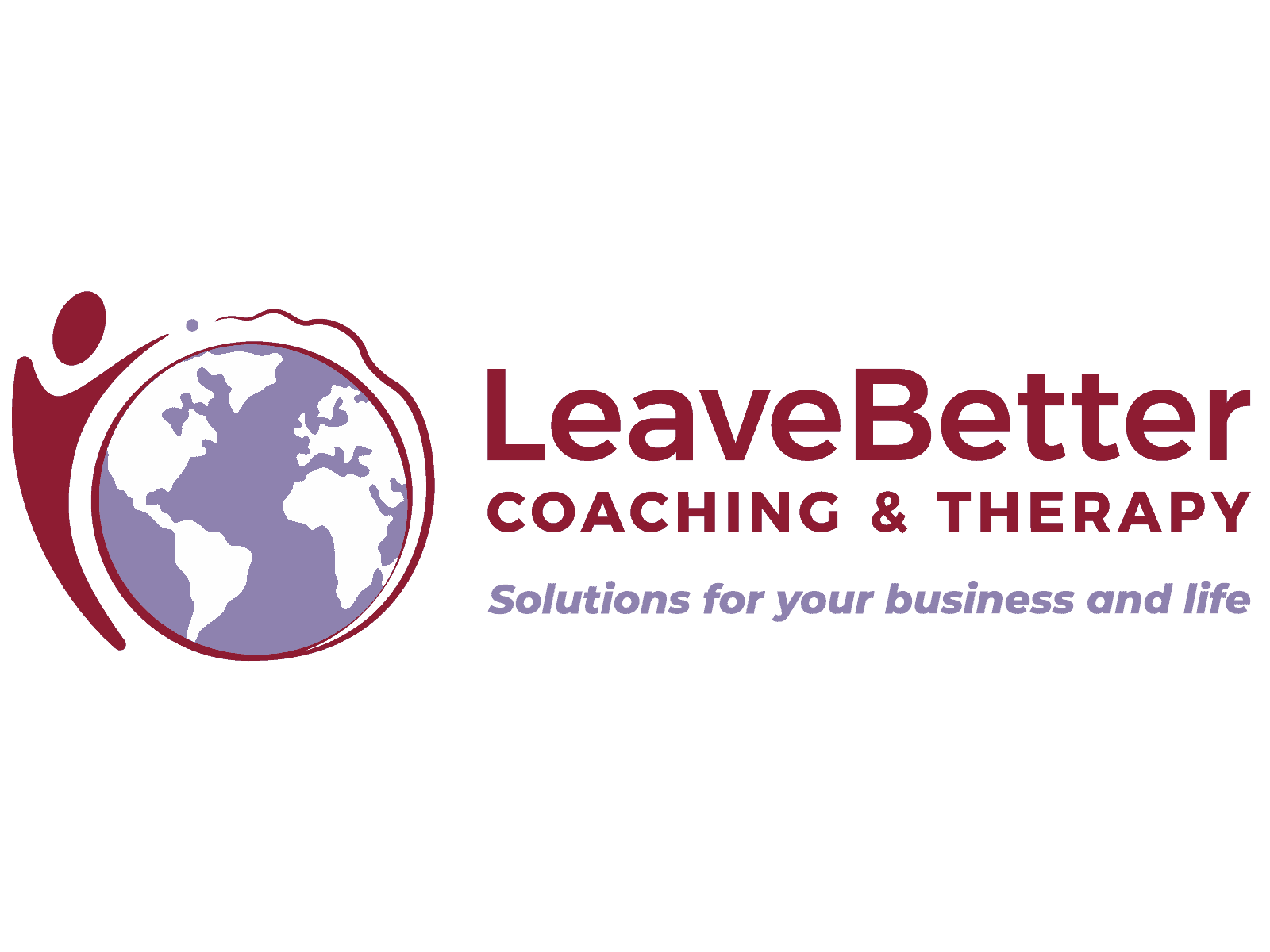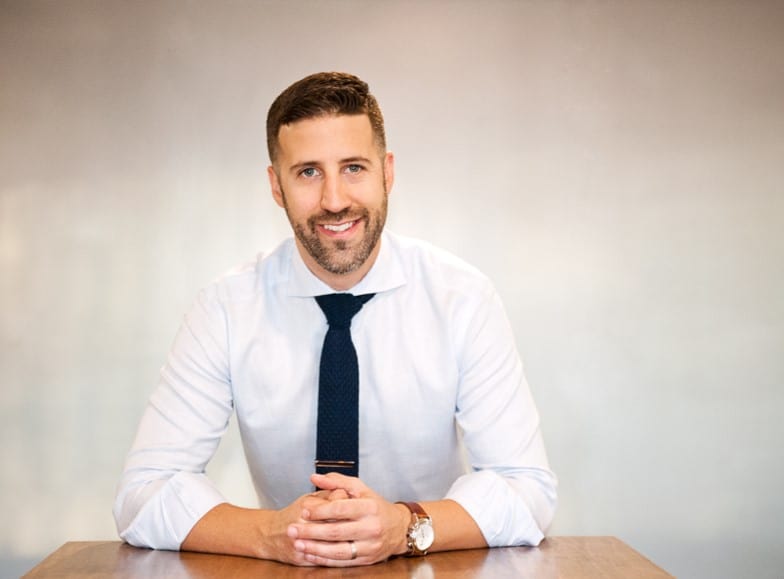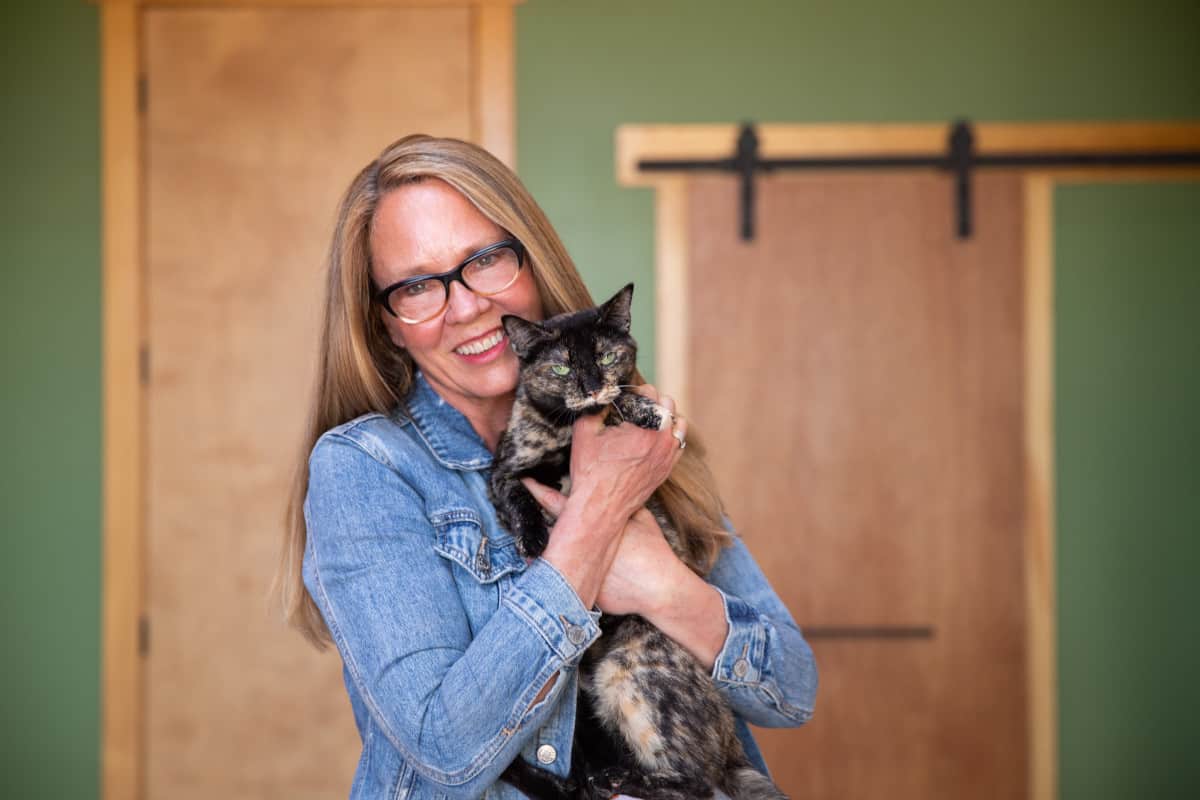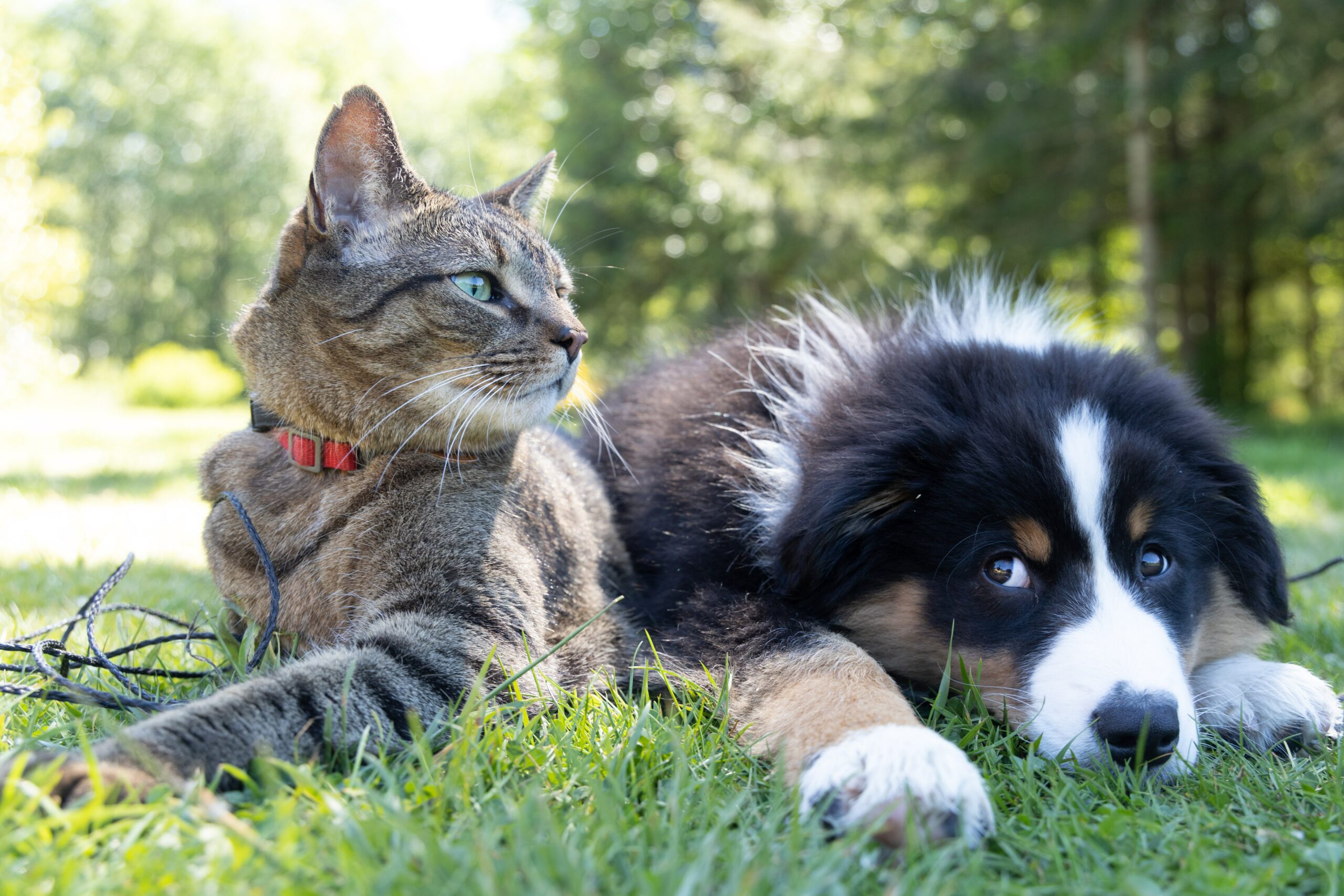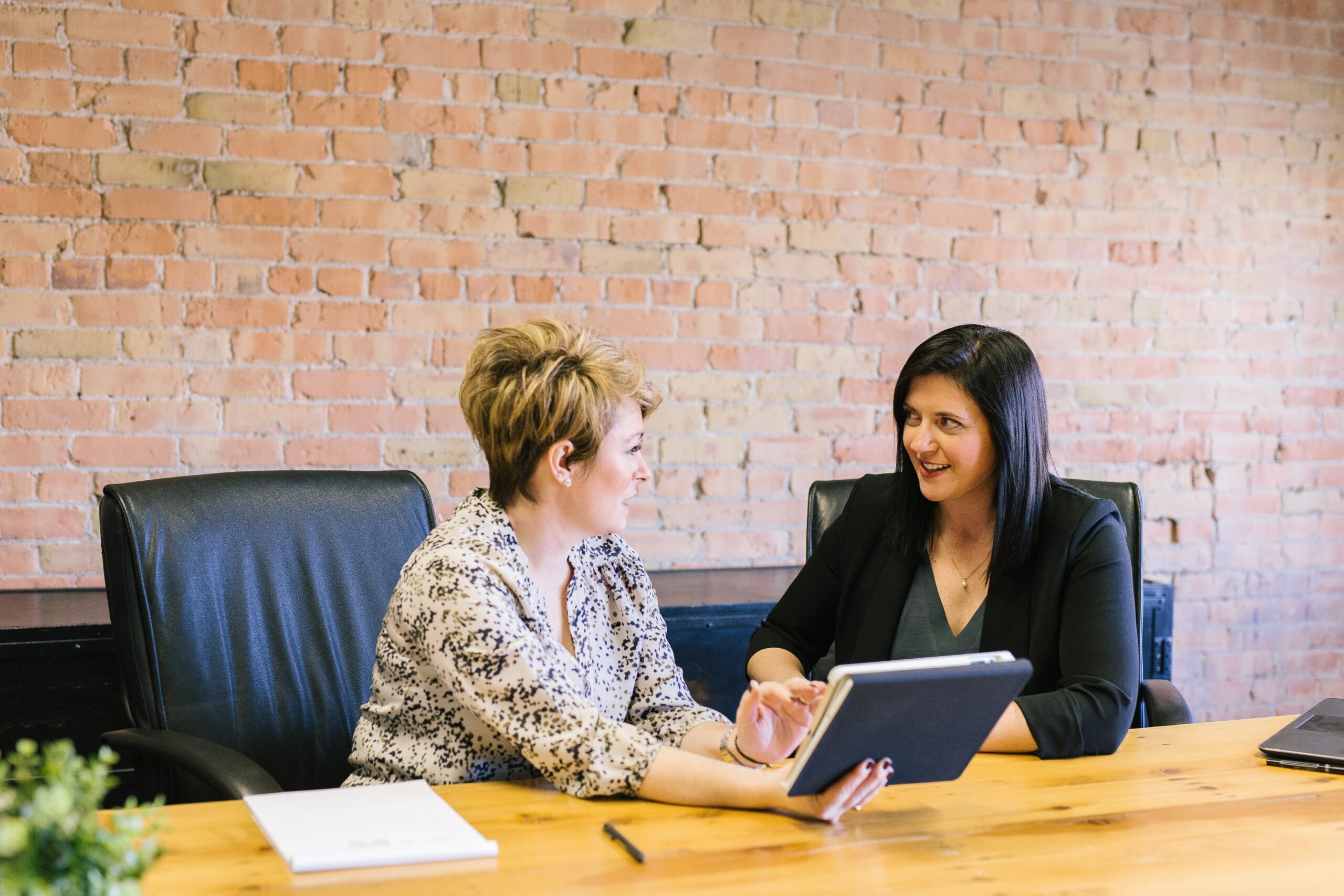Becoming an Entrepreneur – Greg Hickman
Greg Hickman- AltAgency
Miriam: [00:00:00] Hey friends, today I am super happy to have Greg Hickman with us today. He is someone, I’m gonna be as bold to call a friend. I took a class from him in the fall with his company, alt agency. Their mission is to help every agency owner or service provider basically create a situation where they can provide abundantly for their family. They help you productize your service so that you can just do a better job getting it out to the people you serve.
So anyway, I loved the course. It was super fun, Greg, and I’m so appreciative that you’d be willing to spend some time today with us.
Greg: My pleasure.
[00:00:44] Greg’s Success
Miriam: Excellent. So I think where I wanna start with this is you are in a space where you’re, you’re someone I would call pretty doggone successful.
You have gone from a place, I mean, you’re in a multi-million dollar business at this point, and it wasn’t always that way. So I would [00:01:00] like to hear a little bit of your journey from how you thinking about what it is that you help people with
Greg: yeah. So I kind of fell into what we’re doing now. I was kind of an ex agency client- side brat, if you will, who left the agency space after the better part of a decade or two decades. And. I started using a tool called Infusionsoft, which is like a marketing automation tool, I had been researching, you know, growing a business and stuff like that, listening to podcasts. And came across like, you know, online entrepreneurship and a handful of people that were actually using this Infusionsoft tool.
I was like, wait, these people inspire me. I could help them. And so I kind of became like my, my own agency was really like behind the scenes of these like [00:02:00] influencers, if you will, authors, speakers, coaches building out their like marketing automation, their webinar funnels and all that.
what happened was we, like, we were like most agencies that at least we talked to now, like full capacity, don’t really have the bandwidth yet. We’re not making as much money as we’d like working nights and weekends. I was on a sales call and like really could help the person, but like just didn’t have the bandwidth, like no more hours left in the week and I said, look, like.
Doing it Yourself
I have a wait list but I can show you how to do it yourself. And I charge him 50% of what we normally charge to do it for them. he was like, I’m in. And I got off the call and I was like, what the heck just happened? ? Yeah. Yeah. I’m like, I don’t even know what, I just sold this person. Like I just sold him that I’m gonna show him how I do what I do.
So I met with him a couple times. I gave him, Stuff that I had built over the years and examples, and he just went and did it and he like loved it. I was like, wait, there’s something to this.
And [00:03:00] then did that enough times and people like yourself, other agency owners, other service providers just started like, Hearing about it from me, talking about my own journey on a podcast that I had and and YouTube.
So we kind of like hung the agency hat up, if you will, and kind of went all in on, on training others how to productize their service. And we’ve been doing that since 2017.
[00:03:25] Becoming an Entrepreneur
Miriam: Let me see if I’ve got this right. Yes. So, at one point you worked for someone else, like you traded your hours for money for someone who was your employer and you were like, This kind of sucks. I’m done with this.
Yeah. And you went out on your own still doing the same skillset. You were doing it for the entrepreneur. They would come to you and say, I need funnels, I need this, I need that, I need marketing. And you said, I’m your guy and you did it.
Greg: Before I went outta my own, I, my last employer was Cabela’s. I [00:04:00] was the head of their mobile marketing department in their digital marketing team. And so that was like my last like employer. So we had been working with, Outdoor retail. And so when I went out on my own, my first like attempt at working for myself was, well, I’m just gonna help the smaller Cabelas do what I did for Cabelas.
That was really difficult because independent retail is like 10 years behind. Everything. And so like, it was really difficult to get really any traction. I was kinda like stuck at like 5K a month and like hitting my head against the wall when the, the automation thing for the online entrepreneurs thing happened.
Learning Curve
So, The first go was not pretty, and the second go was a slow start, so, right. It wasn’t just automatic.
Miriam: Okay. I just think that people need to hear that because there is some something in our, I think potentially the fact that there is Google and YouTube and you can look anything [00:05:00] up makes people think, eh, it’s not that hard.
No, it actually is really hard, you know? Yeah. In some places, and there’s a learning curve and I, what I hear you saying is you knew you hated working for someone else, and you’re like, why can’t I not do the same thing that I do for them? Why can’t I not do it for me? Then you found out there’s a bit of a learning curve there,
how did you coach yourself through that space of, first of all, it’s super scary to leave a business where you are being paid and your insurance is being taken care of. Oh yeah. And then you’re like, I’m gonna start on my own. I mean, I assume at that point you were married and had had little people.
I know you have little people now. No. So
Greg: no little people. I actually Proposed to my now wife, sold my house and quit. Quit that job at Cabela’s all within a matter of three weeks. Wow. And that was 2013. So I finished out the year with Cabela’s in [00:06:00] full-time on my own 2014. Okay. And have been, and have been since.
Build the Other Side
So like, I was living in Denver, my wife my now wife she was just finishing med school and was gonna be matched, if anyone’s familiar with that process. Like, so she was likely going to be anywhere in the country, but Denver. And so the market was really good and I sold my, my hou, my, my.
That my nice six figure salary from before was giving me As, and I used that as like a safety net for going out on my own. I had some side business. It wasn’t like a, a full leap, like some stories, I was generating some money on the side enough to like cover my rent and most of my expenses. But I also had the, the savings and safety net from selling selling my home.
Which was a bold move. I wish I did not in hindsight, while I, I don’t say I regret it, but like it would be worth way more now cuz it was in like a , [00:07:00] it, it was in an up and coming area in Denver. Sure. And it blew up and it’s like, man, I could have gotten a lot more if I held on . But nonetheless I was anticipating having to move somewhere across the country.
Then my wife matched, matched here, so Course, but it still was that, it was definitely nice. Mm-hmm. , knowing that I had that, like a runway that I knew would last me a couple years. Yeah.
Miriam: Which I think actually is super important. I always tell people, build the other side of your bridge that you’re gonna walk from A to B.
Yeah. Don’t just leap without a parachute because that is called gambling. That is not called entrepreneurship.
[00:07:35] Gambling vs Being an Entrepreneur
Greg: Yeah. . There, there is a, there is a point where like you need to kind of draw the line especially if it’s like I. Drags out too, too long. Yeah. Because if the side thing does pick up enough traction, it will create a lot of friction.
And there is still that little bit of a leap of like, well, this thing isn’t gonna grow anymore than it is unless I have more bandwidth to put towards it, and that bandwidth [00:08:00] gonna come from me leaving the thing that is currently safe. Yes. Which is why for me, having sold my house, it was like, all right, like I have.
Nest to. Used if needed, which was definitely used .
Miriam: Yeah, yeah. No, I appreciate you saying that. The, I think that we don’t talk enough in the entrepreneurial space about the fear. Fear that can really pr keep you from making the move you need to make. Sometimes the fear is wisdom and it keeps you from making the move that will destroy you.
But there is a space where if you’re really gonna do it, you have to say, okay, what do they say? I’m gonna burn my ships. I’m burning the ships. Yeah. Burn the, yeah, burn the ships.
Greg: Yeah. Yeah, yeah. I mean, I think you just have, if as an entrepreneur, I think like you just have to learn how to operate with a certain level of, certain [00:09:00] level of fear.
Operating with Fear
Because like, it’s not gonna go away. Like there’s still moments where I’m, I, I operate out of fear sometimes. And I know people well ahead of me that would agree. So it’s like, it’s not like, oh, when I’ve reached x I won’t be afraid. Like that’s that’s a fantasy like you’ll be afraid of something at some point.
And yeah, so it’s like, okay, cool. Like I just have to learn how to operate with a little bit of that in my life, however, yeah.
Miriam: That feels like wisdom.
Greg: Yeah. One thing that I actually just shared this earlier in, especially around like the, the leaping part or like finally you know, the, the example of like, Tarzan, like you ca, you, you gotta let go of the, the last vine to reach the, the new one.
Like, there’s that moment where it’s like you can’t be just holding onto both, you know? Yeah. And if you think of like two, like a Venn diagram, like two circles overlapping and one is fear [00:10:00] and one is excitement. Like that the overlap, that sweet spot I think is actually like, The perfect place because if you are if you’re all fear and zero excitement, I would say that you’re not ready.
And then mm-hmm. , if you’re all excitement and no fear, I would say that you’re probably not taking whatever the thing is serious enough, So you kind of need a little bit of both.
Miriam: I would agree with you in not only just business, but also life, that that plays out in a lot of other things like relationships or big purchases or, oh, for sure.
[00:10:36] Self-Sabotage
Miriam: Let’s talk about maybe some self sabotaging mindsets, thoughts or behaviors you saw in yourself earlier in life.
How did they hold you back? How did you address them? How were you released from them?
Greg: If I’m honest, I am not fully released from them. They still find their way in and out of my life. That’s a good question. I [00:11:00] mean, I think one of my mentors, Dan Martel he, he calls him entrepreneurial hand grenades.
It’s like you have something going well and then like you kind of just throw the grenade and blow it up and start from scratch because you. You feel comfortable in the phase from starting to where you were at, where you decided to self sabotage. It’s like, because going to the next level is uncomfortable, there’s uncertainty you don’t know.
And so I feel like that’s usually where I’ve found myself wanting to potentially self- sabotage.
So once I kind of learned and realized and became self-aware of that the biggest thing I did was just surround myself with other like-minded people, which came by the way, of investing in coaching programs and masterminds and being around other people that would understand what I was going through and would be a like a filter for, Hey, this is what I’m feeling and thinking.
This is what I’m [00:12:00] thinking about doing is in any way does this sound like I’m self sabotaging?
Outside Perspective
You know, like, and I had that conversation two days ago, like me calling someone saying, this is what’s happening. This is what I’m thinking about doing. Is this a dumb idea? Like, is this, does this sound like I’m retreating or does this sound like, I’m like thinking about this with a, like with a, with like, you know, a smart mind.
And you have to like, run it through because, you know, you can’t see the, what is it? You can’t see the label from inside the bottle. So you gotta, you gotta be able to get external help from someone that gets it, I think. So I’m definitely guilty of it to this day for,
I don’t think this should not be talked about, but like I started seeing a therapist and she introduced.
The concept, which was very new to me, cognitive distortions. She sent me this list of like the top, I don’t know, 11 cognitive distortions. And I was [00:13:00] like, within seconds of reading each one I had like an example and or a re like very recent story of me doing the thing that I just read. I was like, I operate, Like this almost is like an operating manual for me.
What is going on? This sounds horrible, but like it all started to make sense. Like I didn’t know what these things were. So now understanding that those are there, and again, having someone to talk to about it has been like extremely helpful.
[00:13:25] Getting a Therapist
Miriam: Yeah. I appreciate you saying all of those things.
It takes a certain amount of humility to be able to say, I’m gonna get someone else’s eyes on this and hear from them, not get defensive, not push back, not tell them why they’re wrong, not make excuses, just hear from them. Yeah. And see if they have a different perspective. You know? That’s what I hear you’re doing with your mastermind groups, with your Yeah, yeah.
Mentors. And I also, I mean, I am a therapist also as well as a coach, so I, I can appreciate what you’re saying and I understand cognitive distortions we all [00:14:00] have. Yeah. Yeah.
Being Humble
Greg: And I, I would argue, actually tweeted it this morning cuz I was talking with a friend about my therapist and I was, Now having, and I’m, I’ve, we worked, me and my wife, we worked with a marriage counselor once for a little bit.
It’s like, that was like up until now my most recent, I’d say, dealing with a, some sort of therapy. I’m only like a month and a month or so in, so still very new, but like three calls, it’s like the exercises, like you had really has you seen things differently. It just kind of dawned on me like this morning in this conversation and I.
Man, like so many entrepreneurs are like out here looking for a coach when like, they should probably go get a therapist. Like, yeah. And like it’s, and I still haven’t, not quite nailed the difference. But like, I think there’s a need for both. And so, yeah, I mean, to have the skills of both in one is, is pretty, is pretty sweet.
But yeah, I mean super, super insightful. I mean, [00:15:00] introspective yeah, it’s. I think much needed for most entrepreneurs should probably have a therapist, in my opinion.
Miriam: Can you share, I mean, you said there’s like this whole list of cognitive distortions.
Can you share a couple that stick out to you where you’re like, ah, I do this all the time, or whatever. Yeah.
[00:15:17] Cognitive Distortions
Greg: Totally. Lemme just pull up that list cuz there were a lot of them and I, I’ve looked up a couple different times and some of them, some places label the same thing with a different label, so.
Sure. Overgeneralization so overgeneralization when you overgeneralize something, you can take an isolated negative event and turn it into a never ending pattern of loss and defeat.
Miriam: Yeah. I mean, it’s always this way.
Greg: Perfect example. One client says something bad, all of my clients hate us. , Uhhuh, , Uhhuh.
Like that’s a, like all the time. Yeah.
Jumping to conclusions. And like the people listening, if you’ve never even heard of cognitive distortions, like, which I didn’t, but like I’ve heard of jumping to conclusions. Sure. Like when [00:16:00] you look at that as, people operate this way, like, and how like toxic it could be personalization.
Things in Your Control
So lead you to believe that you’re responsible for events that in reality are completely or partially out of your control daily.
One of them was, and this list that I’m looking at has a different name for it, at least I’ve not found it was like, like all or nothing or something like that. Like, or black.
Black and white. Mm-hmm. where it’s. Looking at everything as like either or, and it can’t be like situational or so yeah, I definitely, oh yeah. All or nothing. Polarization or all or nothing. All or nothing. Thinking totally. Like when you engage in thoughts of black or white with no shades of gray, this type of cognitive distortion is leading you.
Yeah, I’ve definitely felt that. Leads to extremely unrealistic standards for yourself and others that could affect your relationships and motivation? 100%. I mean, I can’t think of an entrepreneur that probably hasn’t thought about that.
[00:17:00] Like if I don’t make x million. My business is a failure. It’s like, okay, well what about like a half a million, less than that?
Are you still a failure? Like why that number? Like it’s like, it’s like it has to be that thing and there’s like no real, it makes no sense. Yeah. But I do that . I’ve definitely been guilty of it.
Miriam: Well, I’ve seen this in businesses where if your revenue doesn’t go up every single year, you’re a failure somehow, even though you’re making more this year than.
Year and when is it enough? And most people don’t have any answers for that. Yeah.
[00:17:35] When is it Enough?
Miriam: You know, yeah. I was doing some consulting in a company and they had one of those little charts that shows your revenue. It was like 5 million, five, 6 million, 7 million, 15 million, 17 million down. And the last one. Went off the chart, the other direction. Mm-hmm. so it wasn’t the 5 million. And they were all like, oh my gosh, we’re all gonna lose our jobs. We’re failing, we’re [00:18:00] whatever. And I’m going, what?
What was your projected growth for that year? And it was something like 12 million. What did you guys make? 77 million. I don’t think you are failures. yeah. Yeah, because you know this weird, that is a cognitive distortion, right? There is. If you’re not always going up into the right, oh, I guess we suck.
Yeah, totally. Yeah, 100%.
Magical Thinking
So do they have one on there called Magical Thinking? That’s what I always see entrepreneurs doing.
Greg: Not on this list, but it might be called some, it might be called something else.
Like, yeah, my wife, my wife likely won’t listen to this, but she does one also. It’s called Always Being Right
That, that’s on here. So, yep. What you, what you just thought? Your wife being your wife is actually a cognitive distortion. So you guys should all sleep well tonight knowing that , that your spouse might have cognitive distortion as well.
Miriam: Yeah, I was gonna say, I, I think that [00:19:00] that can go both ways, Greg. Yes.
Well yeah, I think this is a fascinating topic and I’m so glad you brought it up because it isn’t one that I’ve talked about on my podcast before and it is one that plagues entrepreneurs everywhere and honestly just human beings. Yeah, for sure. It’s, it’s why it’s the thing. So let’s, let’s switch this, the topic just a little bit.
Hmm. If you were to turn back time, what would you say to younger Greg and at what age would you say this based on what you know now?
Greg: Man, that’s a good question. I would say what I would probably say is make sure you define what success looks like and feels like for you. Mm-hmm. and like have it written down, . So I would definitely say that. And what was the second part of the question and why?
Miriam: Well, first, why, why would you say that? The, the second part of the question is h at what age would you tell, would you [00:20:00] go back in time to tell that version of you?
[00:20:02] Turning Back Time
Miriam: You know, some of these things we gotta know really early and some, maybe a little later in life.
Greg: Yeah, I mean, I would probably, I wouldn’t go back as far as I like, part of me wants to say like 20. . Okay. For the record, for anyone? Listen, I’m 40 , so like, I don’t know, like when I’m like in the wor early, early stage workforce, like trying to figure out what I want to do.
Yeah. I met my wife. True adulthood.
Yeah, yeah. You know, like you were a, when you’re actually starting to think about what you want and what you care about. Yeah. So I think. Somewhere in my early twenties. Early to mid twenties.
Miriam: So you would say, Hey, let’s, let’s define younger. Younger me. Let’s define what success is so we know what we’re chasing.
Yeah. Tell me how your ideas of success have shifted and changed from 24 to 44.
Greg: Oh, easy. They’re mine and not somebody else’s . [00:21:00] Yeah.
Miriam: So what did it look like when they were somebody else’s? Well, It was a lot about what people had and like what I thought their lifestyle looked like, or how big their business was, like random, arbitrary numbers things like that.
Or certain maybe accolades or recognition, blah, blah, blah. And what it is now it’s more about Peace. And I’ll even read some of them to you because I have a little document that I read in the morning that reminds me of what it is.
So success to me the business is big enough and profitable enough for me to hit my money goals and my team to hit theirs.
What is Success?
I can wake up every day and ask, what did, what would I like to do today? My passive, and I put passive in quotes, revenue income exceeds my lifestyle. I’m working on projects that excite me and allow me to do my best work. I can disappear for several months with no effect on my income. There are no whiny people in my life.
I have no [00:22:00] time. There are no time obligations or deadlines. And I work with great people making great things being a good example to my children, Sarah, my family team and peers as a good husband, leader, mentor, and life- liver. Having a marriage and life that inspires our children and even family and friends around us to be better.
Having a team that is winning at life, not just in business. And then happy clients that share how we’ve helped without asking, and even sometimes when we do.
Nice.
Being in Competition
So that’s like reminders of what, like, and for anyone that just listen to that, please recognize that there’s not a single number or dollar sign in any of that.
And or item or item, you know, material thing. Yeah. So yeah, I think that’s like the huge swing. And you know, to your point earlier, like YouTube, all this stuff, I have been, so, and this is very recent for me too, like, and I’m still working on this all the time. Cause I think it’s, with the way that our world [00:23:00] works and our, like, the amount of information at our fingertips, I think it’s very easy because it happened to me for us to blindly adopt someone else’s goals and or definition of success and operate as if they were our own.
Which is weird because you end up feeling at least like I did that you’re like in this race and you’re losing. Then you didn’t even realize you entered the race. Like you’re like, you just feel like you’re losing and like competing and you’re like, I never knew that I was in a competition. . You know? And it’s a pretty crappy feeling.
[00:23:42] Your Own Playing Field
Miriam: And what’s actually interesting. If I can I don’t know if you know of or heard of Todd Herman. Mm-hmm. He wrote the, the Alter Ego Effect okay. Or the ALT and New York Times Bestseller. He’s a high performance coach, worked with a lot of like professional Olympic athletes and entrepreneurs, and he’s one of the [00:24:00] first entrepreneurs to, or first people to teach entrepreneurs the way that he teaches people in sports.
He tells this story of he was working with like a famous athlete, I forget what sport, and he made the comment that coaching entrepreneurs is like infinitely harder than coaching an athlete. And the athlete like who is I think played in Wimbledon, it might played in like, like you, we would all know the person’s name if he had said the name.
That’s how well-known they were. It was shocked that it was harder. Do mental fitness, mental performance for an entrepreneur than an athlete. And the reason was so insightful, tied to just this, was he goes, when you step on the, the tennis court, the net’s already up. The lines are already on the court and you, and you know the rules of the game.
Most entrepreneurs jump into business. They never drew the [00:25:00] lines for their own court, their own field of play, and they never made the rules. Like so they just went out there and were figuring it out. And yeah, it’s like, how do you, how do you win a game? Or how do you at least feel like you’re making progress if you don’t know the rules?
Drawing Your Own Lines
Like you don’t even know what strategies to use if you don’t know the rules. So you could be going down some tactical rabbit hole using the wrong strategies simply because you don’t know what the rules are, and or what’s inbounds what’s out of bounds. And so like that really hit home and it was.
As entrepreneurs, and I think honestly just in life, like we need to draw the lines of our own field of play and make our own rules because we live in a time where we can, which is great. And like then play by them because if we’re just like bli, like blindly operating and we see ourself losing, like that person might be playing a different completely different game and have a different strategy than [00:26:00] you.
You probably shouldn’t even follow it . And so like, but yet you compare yourself as if you were losing compared to them, but you never kind of defined your own field of play. Like that was like, man, like I was operating that way. You see someone saying, I have a whatever figure business, and you know, X employees and served blah, blah, blah, featured in blah, blah, blah.
And you’re like, that’s what I need to get to or else I’m not successful. And then like, when I really think about it, I was like, man, if I could take Fridays off, which I do and I can mountain bike two to three times a week when it’s not snowing, I. I get to drop my kids off and pick them up every single day from school, which I do.
Winning
I’m like, that’s winning to me. I’m like, wait a minute, I’m, I’m already successful. , like, yeah, like I’m there, like I’m doing it. And so I don’t know if that’s just like getting older and you just cuz of wisdom and then also having kids. But. Yeah, like my definition and my of that and my desire of what I [00:27:00] want is has changed.
And one other thing that he said, sorry, I’m on a rant, is that, you know, cuz this was happening in a mastermind that we’re all in and one of them posted like the leader this mastermind posted. The most difficult thing arguably in life is to know what you want. And Todd replied and said, actually, it’s not knowing what you want.
[00:27:23] Admitting What You Want
Miriam: It’s admitting what you want because you’re afraid of what other people will think of you —if it’s what, not what they want, or something that they might think is not that great. We’re actually thinking like that. He goes, what we need to do is obviously not worry about what other people think, and this is something I was getting hung up on, maybe this all or nothing, cognitive distortion, the mm-hmm.
He’s like, we all go through seasons of life. I’m like, I was making decisions. well, if I gotta do this in five years from now, here’s what I gotta do now. Sort of, sort of behavior. And he was like, you know, it’s [00:28:00] okay to want what you want right now and not have to tie it to like, like permanence.
Like, like you can want what you want for this the next two, three years of life as a season. And guess what? Your kids go to school, you’re gonna want something different and you’ll be in a different season and you’ll have different motives to go pursue that. He’s like, stop making decisions as if the decision you make now and or the thing you want now is something that you’re gonna have to say you want forever.
Like disconnect from the forever thing because that’s not how it works. Like you can want something for the next three years and then want something different. And I was like, oh my God. Like took the shackles off. It was like so purine. Yeah. But yeah. I think that’s why I would say that to myself because for years I was just like, probably felt way worse about myself than I really needed to.
Comparison and Individualization
Yeah. Well it at the heart of all of that, that you’re talking about it, it has to do with [00:29:00] comparison and individuation. This ability to say, I’m gonna compare. the me of today to the me of yesterday instead of the me of today to the you of, you know, whatever. If I compare myself to you, we’re, we’re in completely different places.
You’ve been in your business twice as long as I’ve been in mine, and we are chasing different things, et cetera, et cetera. And so how do we become okay with comparing the me of today to the me of yesterday? Like there had to be, I’m sure it was gradual. Space in you of what you wanted not only became more clear, but also you became better at not comparing to the other person.
Do you have any kind of thoughts on how it is that you made that transition? Yeah, and I’ll still, again, honesty, still struggle with some of the comparison stuff. Yeah, we all do writing it down. Yeah, writing it down. I mean, like I literally, for those that aren’t watching a video [00:30:00] of this, I read off of a document that is called My Morning Ritual Document, and it has a bunch of bullets for daily reminders some bullets around my immediate goals, and then those bullets that I read to you that were my definition of success.
So it’s like, I feel like every morning, and I don’t do it every morning, but I do it most mornings, just whip open my phone and I read it on my phone. I’m having coffee. It’s like my, like daily recalibration of like, hey, like let me start from a place of like, I know what game I’m playing. Remind myself of the rules that I’m playing by.
Having Your Own Goals
So that when I know that I scroll on Instagram and I see the thing that I don’t wanna see or not that I don’t wanna see, that then could influence that. I’m like coming from a place of like, I started grounded. So that’s one. Write it. Which shockingly takes time. Like the, so making space, like disconnected, like on a pen and paper.
Ideally to go right, like on some of these things. I think as busy entrepreneurs, I mean, it’s so much easier just to like, [00:31:00] oh, I’ll take what she has and I’ll adopt that goal. And that sounds nice, like scrolling through Instagram. I like that heart, that bookmark, that that’s gonna become my belief.
It’s so easy to collect other people’s goals and beliefs and like not create and define your own because it takes time and it takes work and we’re busy, you know? So it’s like you gotta like pull yourself out and disconnect and like spend some genuine time trying to do that. And I think that’s kind of when I finally just said, okay, like I need to do this.
It really started. Coaches, mentors, therapists active conversation, because this is not like a set it and forget it thing, like it’s, you know, every day. Like, you’re, you’re, you’re on the battlefield, you know, you gotta deal with these things. So that’s helpful. I unfollow, like if I’m on social media which I try not to be on as much, but like Instagram, like I love Instagram, but I don’t follow anymore.
[00:31:54] Output and Input
Miriam: A lot of business people. That’s like where I follow, like all my mountain bike [00:32:00] outdoorsy type content that like lights me up and inspires me. Not like, but if I scroll by anything on Facebook, Instagram, that is someone else. And I catch whether they’re like, by the way, I do this with some of my friends, like peers, mentors were like, I, I catch myself feeling bad about myself or less than from their message, which obviously has nothing to do with and everything to do with me, I will unfollow them. Or like in, in Instagram, you can like mute people for 30 days. I use that feature all the time, like mute for 30 days.
let me see if, when it comes, when it comes back up, if I’m still feeling that way, mute ’em again or unfollow or unfriend. And just like cleaning out the input, right?
Things to Look Forward To
Like our output’s only as good as our input and so I gotta, I like really try. and I go through waves just like anyone. Throttle that and like filter that and, you know, [00:33:00] constantly pruning what are my inputs. So that’s like the tactical things that, that I did that, that helped me. One other thing that I did which I may or may not have told you on one of our calls,
I, and I don’t know how this this necessarily ties to it, but it, it helps me. I try to have something on my calendar every 48 hours that like, I’m looking forward to, that’s like not business related. Mm-hmm. , whether that’s like a, a workout or like going for a ride or we’re having, you know, x, y, z friend over for, you know, dinner date night, you know, oh, this, we’re gonna watch this movie this night, this week.
Like I try to have something.
Still related as much as possible. Some of those things that I look forward to are entrepreneurial, but yeah, having that on my calendar is really helpful. What’s your best guess? I love this idea. You’re the first person who’s mentioned this kind of frequency. What’s the, what’s your best guess as to the 48 [00:34:00] hours?
Little Doses
Like I’ve heard some. Influencers say, you know, every 90 days, make sure you have something relatively big to look forward to. Why, why 48 hours? I mean, I don’t think it takes a, like, I don’t think it needs to be a big thing. So I don’t know. I’m a believer of like 1% better every day. And so like, like I know me like this morning.
Something that I’ve been experimenting with just in the last like 60 days is like, I’d rather work out six days a week for 20 minutes than work out three days a week for an hour. Or two hours. And so like, I went in and I picked three exercise, four exercises, and I did five sets of bunch of exercises.
I was done in like 18 minutes and I feel good. like I yesterday and I’ll do it again tomorrow. And I don’t feel like I’m, like, it fits with my schedule right now. So like the, the, the little, the little doses for me. Work really, really well. 90 days is long. I mean, it’s [00:35:00] not, but it is . And like I do have big things that I work on, but I don’t know, like the big things are made up of a lot of, a little, a lot of little things , so, yeah.
[00:35:10] Focus on the Little Things
Miriam: Yeah. Why not focus on those? I love it. I, I mean, I think that there’s something to that it reminds you that your life is more than your business and it, you’re getting, yeah. You’re stacking up small wins that you know will work for you. I unfortunately am paying attention to the time and realize we probably need to draw this to a close.
But one, one fun question, then I’ll let you, you know, share how people can find you. This is kind of a weird, is a Tim Ferris question. In the last six to 12 months, what have you purchased a hundred dollars or less that you’re just like, oh my gosh, I love this thing. Oh man. I feel like I have the king of $100 purchases in the last six to 12 months.
Yeah. I really, this is like [00:36:00] six days this. Is arguably the best water bottle that I’ve ever had in my entire life. A wallah, I bought two of them, a 24 ounce and a 32 ounce the like mouth lid for those listening, I’m like showing the water bottle right now. It’s like 24 bucks I think on Amazon. Some YouTuber that I follow did a review on it and, This is the only water bottle you ever need.
I need a new water bottle. Done. Amazing. I’m gonna give you one more just cuz it’s I also love it and it was tough to decide. There’s this company called Uug Monk and they have this thing called analog. I’m a huge analog fan meaning just actual the word analog, like not digital, but they have this tool called analog and it’s this little wooden tray and they have these to-do card.
Under $100 Purchases
It’s like you put the date on top and you write your to-do list and there’s a little stand and you can have it right in front of you. And then it’s a tray that has all of them inside and they have one. They have ones that are white that say to-do or today, and then they have ones that say next.
And they have ones that say [00:37:00] someday and it’s a little magnetic. I think it’s like, Just over a hundred bucks. But like I take my to-do list and I put it for the day on here and I close the digital to-do list because I like feel so much better crossing things off. And there’s a little note, like kinda like notes grid on the back.
I love this thing, like, and there’s a little travel pouch you can get for it. If I travel, like I bring a couple blank ones and I write my to-do list on there. I love it. It’s clear. You, I mean, your voice got excited. Your face lit. Yeah. It’s, and for people who are listening, it’s so, I like look at it.
Yeah, it’s, I mean, it looks like it’s black walnut. It looks really attractive, so yeah. That’s, that’s fun. They have a couple different. Okay, I’ll put it in the show notes just because I just think it’s fun to see. One of the problems with algorithms is you see more of the same, and unless you have someone you know like give you a different idea, you don’t, you just see more of the same.
So it’s kind of fun to hear what other people are buying and thanks for those [00:38:00] ideas. For sure. Under $100 purchases. I make a lot of them.
[00:38:09] Where to Find Greg
Miriam: Oh my goodness. Well, before we have you share how people can get ahold of you and look into your program and stuff, I just wanted to mention, you know, before we got on, I talked about how we like to do a donation in your name just as a thank you for your time and the charity you chose is best Friends.
Best friends.org. They are really committed to ending senseless euthanasia in animal shelters across the US by 2025. They’re gonna do it. I mean, I’m looking at their numbers. They’ve been at it for about 15 years. I’m so excited I get to interview the c e o next week. Her, that podcast will probably land maybe a month from now, but Anyway, we’re gonna do that in your name, and thank you for your time, Greg.
And why don’t you just tell people how they can find you? Super simple. I would say, if you [00:39:00] want more of what I was talking about I have a YouTube channel where I release a video every single week. And the fastest way to get there is just go to greg’s videos.com and it’ll redirect you right to my YouTube channel.
Or you could just Greg Hickman on YouTube and you’ll find. That’s so fun. Greg’s videos.com. How many people have that u url? Well, just you obviously just me, but yep. It’s good. It’s good. Well, Greg, it’s super fun to just see you again and again. Thank you for your time and wisdom.
End Credits
Listen to the episode on Apple Podcasts, Spotify, Stitcher, and Google Podcasts, or wherever podcasts are found.
Full audio episode found here.
Transcripts of all episodes can be found here.
All Leave Better podcast episodes can be found here.
Music by Tom Sherlock.

